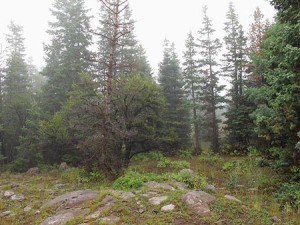
You must feel the Force around you. Here, between you…me…the tree…the rock…everywhere! – Yoda
Zen in Hunting Part 1
Where do you think the idea for ‘the Force’ came from? When you first saw Star Wars as a kid, you knew it was fiction, but didn’t you also feel some connection with the concept of the Force? Could there be some validity to the existence of a Force? Did you ever point to an object and command it to you? The idea of the force–in many ways–parallels the very real concept of the Zen force.
For me, the concept of this magical force makes up a three-part triangle: 1) The fictional/fantasy/magic force that exists in movies and our imagination, 2) the religious force that uses the power of God to “move mountains;” something we learned from our parents, church, or society, and 3) the Eastern Zen Buddhism force (or just Zen) that is understood and used mostly in the East, but exists universally everywhere.
In this article I’m writing strictly about the Zen-force and how it can be used for practical things like archery and hunting.
For more than a decade I’ve been researching and implementing Zen into my life in practical ways. Specifically I discovered a Zen-force via hunting and my deep connection with nature. Today, I continue to use the Zen-force to achieve greatness in archery, bowhunting, and almost anything else I do.
For all intents and purposes, Zen is similar to religion, but also far from it. Zen is not in conflict with any religion; it is simply a higher level of conscious awareness.
To give you a better understanding of Zen, think of it as a natural force that flows through all things…just like Yoda said. Then, think of life, or “the miracle of life,” and the life energy or spirit that exists in all living things. Aside from religious texts, no one really knows what life is or where it came from. We just accept that we’re alive and go about our business. But we must never forget that life is both a miracle and a mystery, no matter what dogma says about it.
What we do know about life is that everything is made up of energy. And yet again, no one knows what energy is; we only know some basic properties of it. For instance, we know that energy is conductive and it’s constantly moving or flowing. The idea of Zen is that we can align ourselves in a way that we connect with the infinite source of energy and conduct more energy through ourselves than we could otherwise. In this way we can do incredible things. For example, we can attract other energy to us.
This is all theoretic of course, but so is life, so let’s move on.
Have you ever noticed that Yoda looks like an old Japanese Zen master? Do you think it’s a coincidence? Zen Buddhism originated in China in the 6th century A.D. and was later adopted, perfected, and practiced in for centuries in Japan. Zen is continually taught through various meditational methods including swordsmanship, calligraphy, dancing, and even flower arrangement. And surprise, surprise, one of the most revered Zen disciplines is archery. But what is Zen exactly, and what does it have to do with archery?
In 2002 I had a major paradigm shift. A few days after harvesting an impressive trophy deer, I had a sudden realization that my success came neither from my hunting skills nor from luck. I seemed as though some mysterious force was guiding me toward success. Years later, when I learned about Zen, I was amazed at how perfectly it coincided with my unorthodox hunting meditations and practices.
For today, think of Zen as a oneness with the Universe. Oneness comes from humility. Zen can only be achieved through humility. Humility comes from realizing you are infinitesimally small relative to the infinite universe. You are not an ocean, but a single drop in a vast ocean. The ocean you are part of is unfathomably large and powerful. Your little life might seem important, but it’s really just a tiny part of an infinite universe.
And that’s where Zen comes in. What if you could take your tiny, insignificant life and harness the infinite power of the universe. There’s nothing you couldn’t accomplish. Zen simply provides the key to unlocking that immense power.
On a final note, Zen is far easier to achieve in Nature because there are so few distractions. Zen is associated with meditation because meditation is a practice of quieting the mind. In my early years of hunting, I couldn’t quiet my mind. I spent the days frantically flailing around the woods looking for a deer to shoot before I ran out of time. Consequently, I achieved little success.
In later years I spent more afield and hunted alone. I also spent more time just sitting and breathing. I noticed after about three or four days my mind would quiet down to the point of total awareness. There was no future or past. This state of being is sometimes referred to as the infinite now. Time is meaningless. Desire melts away. It was in these moments that I achieved wonderful success in the woods.
Nowadays, my spirit enters the woods long before my physical body. My physical body is here, working, driving around, answering calls, etc., but I’m just going through the motions. In reality, I’m already gone. My energies are focused on the impending bowhunt. I am living in a continual state of meditation and mental preparation; I am preparing the way for Zen in hunting.
This topic is further discussed in part 2 of this three-part series:
Zen in Hunting: Part 2









